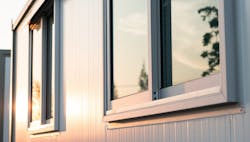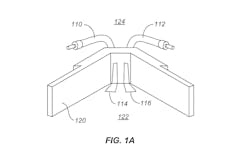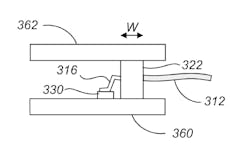A California start-up born out of MIT has developed a potentially industry-changing solution for renewable energy: transparent solar windows. And the window industry is listening.
Ubiquitous Energy calls its patented innovation UE Power. It's an organic coating applied to windows under a vacuum process that turns them into solar cells. The company closed its Series B funding round in January 2022 with investments from Andersen Corporation.
Still in its early stages, the product has the potential to be used on a multitude of surfaces such as smartphone screens and cars, but VP of Strategy Veeral Hardev explains that windows in residential and commercial applications offer a greater impact.
RELATED: Retrofit Push Benefits Remodelers
“We're going to start on the more architectural side because we really believe in the value and broad market opportunity for buildings and homes, not only in the US but across the globe,” explains Hardev.
UE began with founders Miles Barr, Vladimir Bulovic, and Richard Lunt when studying the concept of solar power at MIT and Michigan State University. The founders wanted to dive into the opposite of the research happening at the time: instead of identifying a solution for a lightweight, flexible, efficient solar panel, why not look into a solar product you can't see?
The Science
Traditional photovoltaic technology features thin cells of light-capturing, silicon semiconductors protected in glass and/or plastic materials to ensure a long lifespan. But those traditional silicon cells are opaque (seen as blue or black, depending on the type of silicon), while UE creates transparent cells that are even thinner, measuring at about 1 micron thick, according to the company.
UE utilizes carbon-based compounds (which are also the building blocks in certain clothing dyes) as a vehicle for its transparent organic photovoltaic technology instead of silicon. By going down to the nano level of these small molecule materials, they can modify those compositions to make them transparent and filter infrared and UV rays to be turned into electricity while letting visible light through.
The resulting product is then applied to windows during the normal manufacturing process.
“We didn't want to introduce anything that was really a disrupter or changer to the existing supply chain for [the window] market so we can hopefully seamlessly fit our technology into their process,” says Hardev. “We believe there's a way to have a coating version of this where you can actually come in, and spray coat this, but those are things that are probably a little bit further in the future.”
The transparent solar cell layer is deposited under vacuum to one pane of glass using the same process that the most common window coating, low-E, is made with today. The transparent solar cell layer transports generated electricity to electrical busbars hidden at the edge of the glass (same method to transport generated electricity in traditional solar panels). Electrical wires carry the electricity from the glass and busbar externally out of the window to an energy storage system.
The solar energy system is installed via corner keys or side-mounted to windows. The solar technology does not add a considerable amount of weight to the window, according to Hardev.
The Business Strategy
UE’s strategy is to partner with existing window manufacturers so established manufacturers can offer their windows featuring UE Power. This aids a mutually beneficial partnership with manufacturing expertise coming in from vendors, explains Hardev.
There are two primary products planned to be offered by UE: a self-powered, or autonomous, window and the solar system window.
Self-powered windows connect directly to motion sensors, security cameras, and temperature sensors, for example, rather than connecting to an energy storage system.
RELATED: How to Meet National Green Building Standards in Remodeling
“We can actually provide now a window that looks like a traditional window, has the same, or even slightly better, thermal performance around it, and then with our technology, we can enable all of these other features and devices right at the window,” explains Hardev. “From a retrofit standpoint, you could take out your old window, put in this new advanced window without all this need of any complication around the installation.”
The other solar system windows can be retrofitted realistically only in the case of a down to the studs remodel because of the wiring. It can also be used in conjunction with existing solar panel arrays on a rooftop, for example.
UE plans to build a manufacturing line this year, allowing it to offer products by the end of 2024, according to Hardev.




